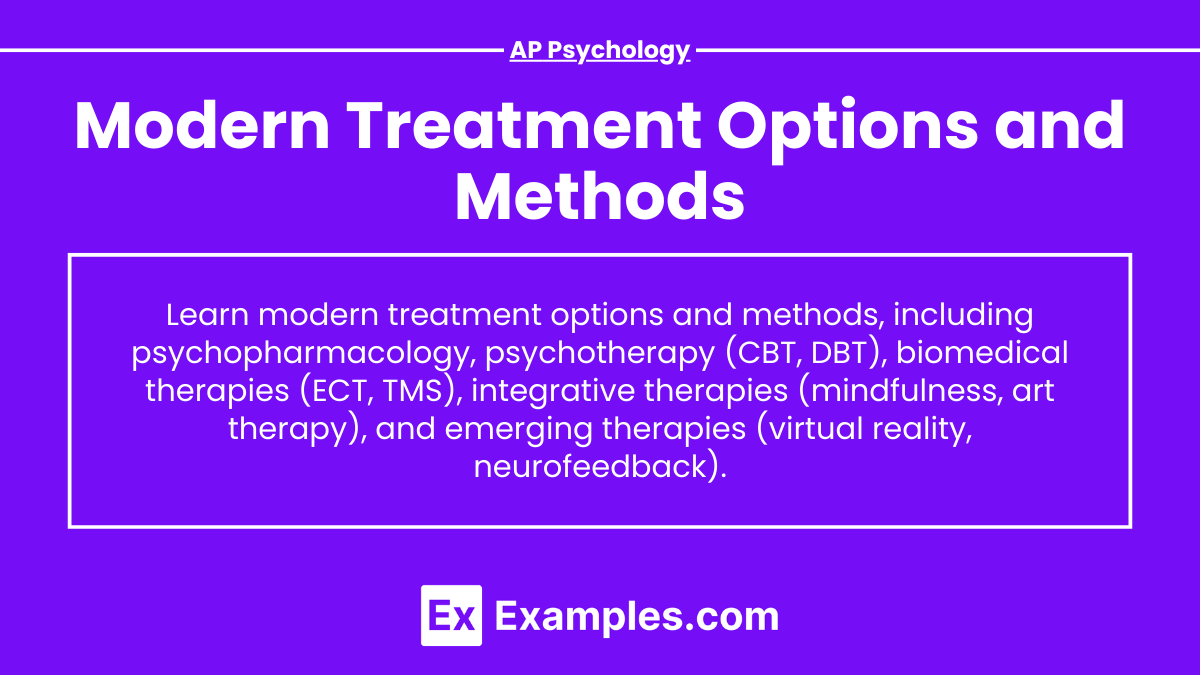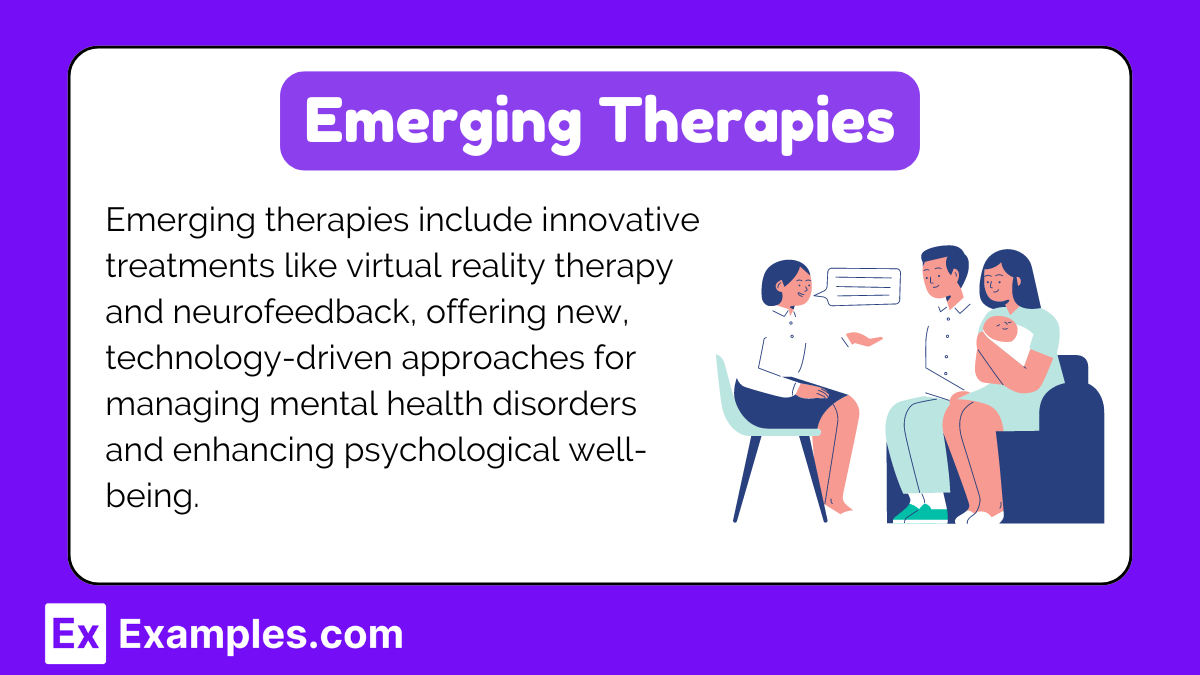Modern treatment options and methods in psychology encompass a diverse range of therapeutic approaches designed to address various mental health disorders. For the AP Psychology exam, it is crucial to understand key treatments such as psychopharmacology, cognitive-behavioral therapy, dialectical behavior therapy, humanistic therapy, psychodynamic therapy, group therapy, and biomedical therapies like ECT and TMS. Additionally, integrative and emerging therapies like mindfulness-based stress reduction, art therapy, virtual reality therapy, and neurofeedback are essential components of contemporary psychological practice.
Learning Objectives
Focus on understanding the definitions, uses, and key techniques of various therapies, including psychopharmacology, cognitive-behavioral therapy, dialectical behavior therapy, humanistic therapy, psychodynamic therapy, group therapy, biomedical therapies (like ECT and TMS), integrative and complementary therapies (like mindfulness and art therapy), and emerging therapies (like virtual reality therapy and neurofeedback). Emphasize the mechanisms, applications, and benefits of each treatment modality.
Psychopharmacology
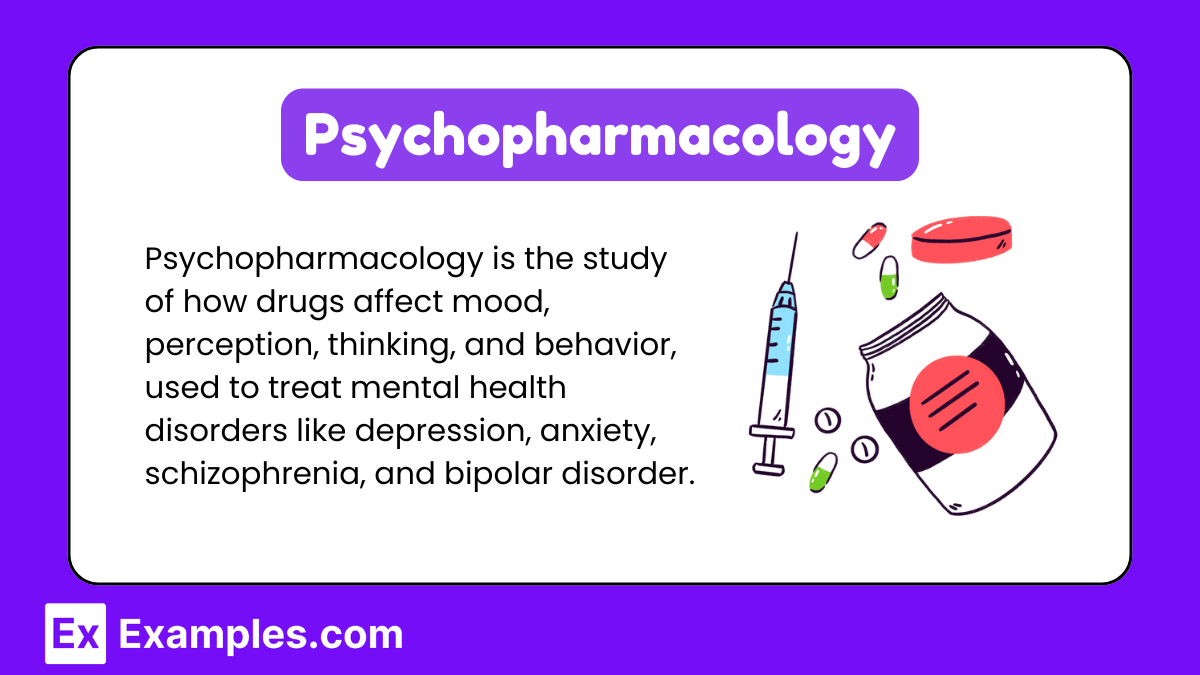
Psychopharmacology is the study of how drugs affect mood, perception, thinking, and behavior. It provides crucial information for treating various psychological disorders effectively.
Common Medications
Antidepressants: Used to treat depression and anxiety disorders. Examples include SSRIs (Selective Serotonin Reuptake Inhibitors) like Prozac and Zoloft.
Antipsychotics: Used for schizophrenia and bipolar disorder. Examples include Risperdal and Clozapine.
Anxiolytics: Used to manage anxiety. Benzodiazepines like Valium and Xanax are common.
Mood Stabilizers: Used primarily for bipolar disorder. Lithium and Depakote are examples.
Stimulants: Used for ADHD. Common examples include Ritalin and Adderall.
Psychotherapy
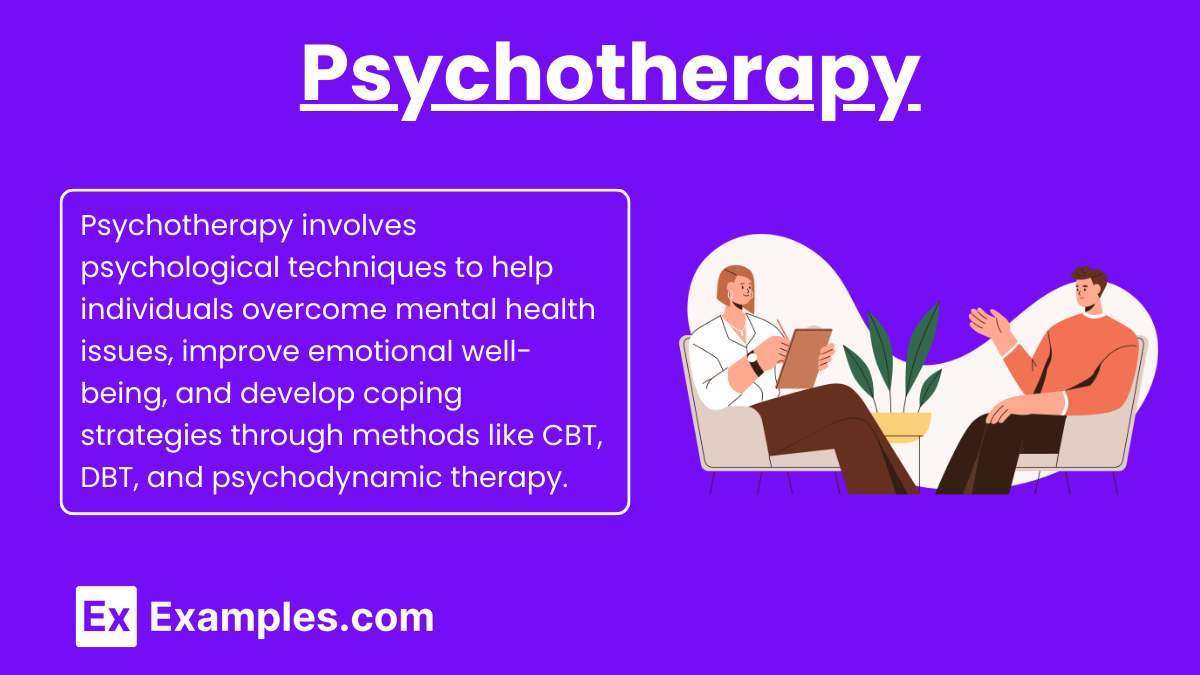
Cognitive-Behavioral Therapy (CBT)
Definition: A structured, goal-oriented therapy that focuses on changing negative thought patterns and behaviors.
Key Techniques:
Cognitive restructuring
Behavioral activation
Exposure therapy
Dialectical Behavior Therapy (DBT)
Definition: A type of CBT that emphasizes the psychosocial aspects of treatment. It was initially developed to treat borderline personality disorder.
Key Components:
Mindfulness
Distress tolerance
Emotional regulation
Interpersonal effectiveness
Humanistic Therapy
Definition: Focuses on helping individuals achieve their potential and increase self-awareness.
Types:
Client-Centered Therapy: Developed by Carl Rogers, it emphasizes unconditional positive regard and empathy.
Gestalt Therapy: Focuses on the present moment and personal responsibility.
Psychodynamic Therapy
Definition: Based on the theories of Freud, this therapy focuses on unconscious processes and past experiences.
Key Techniques:
Free association
Dream analysis
Transference analysis
Group Therapy
Definition: Involves one or more therapists working with a small group of clients.
Benefits:
Provides support from others with similar issues
Offers diverse perspectives
Enhances social skills
Biomedical Therapies
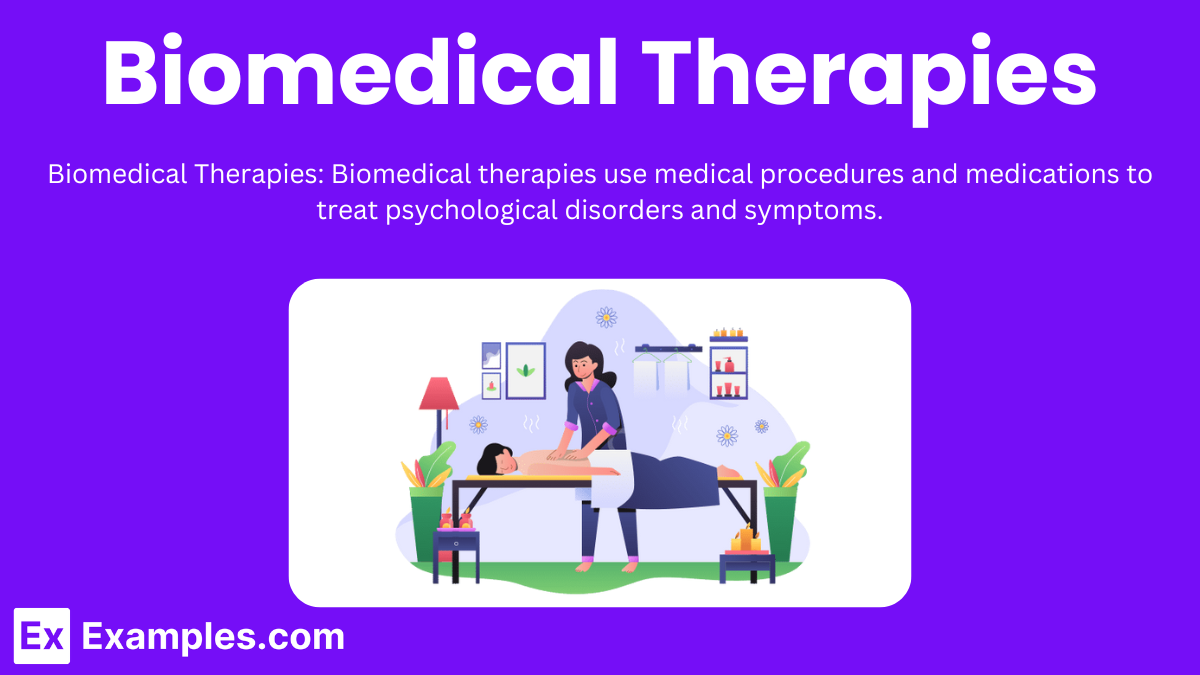
Electroconvulsive Therapy (ECT)
Definition: A medical treatment involving electrically induced seizures.
Uses: Primarily for severe depression when other treatments have failed.
Transcranial Magnetic Stimulation (TMS)
Definition: A non-invasive method using magnetic fields to stimulate nerve cells in the brain.
Uses: Effective for depression, particularly when resistant to other treatments.
Deep Brain Stimulation (DBS)
Definition: Involves implanting electrodes in specific areas of the brain.
Uses: Used for treatment-resistant depression and obsessive-compulsive disorder (OCD).
Integrative and Complementary Therapies

Mindfulness-Based Stress Reduction (MBSR)
Definition: Uses mindfulness meditation to reduce stress and improve psychological well-being.
Key Techniques:
Body scan meditation
Mindful yoga
Sitting meditation
Art and Music Therapy
Art Therapy: Uses creative processes to help individuals express themselves and heal.
Music Therapy: Uses music interventions to accomplish individualized goals within a therapeutic relationship.
Animal-Assisted Therapy
Definition: Involves the use of animals in therapy to enhance and complement the benefits of traditional therapy.
Benefits: Reduces anxiety, improves mood, and enhances social interaction.
Emerging Therapies
Virtual Reality Therapy (VRT)
Definition: Uses virtual reality technology to create simulated environments for therapeutic purposes.
Uses: Effective for PTSD, phobias, and anxiety disorders.
Neurofeedback
Definition: A type of feedback that uses real-time monitoring of brain activity to teach self-regulation of brain function.
Uses: ADHD, anxiety, depression, and PTSD.

